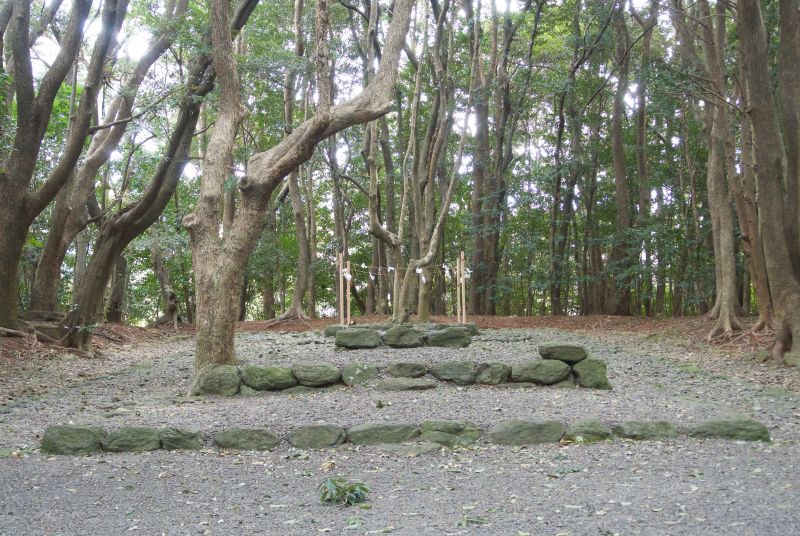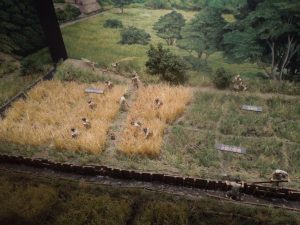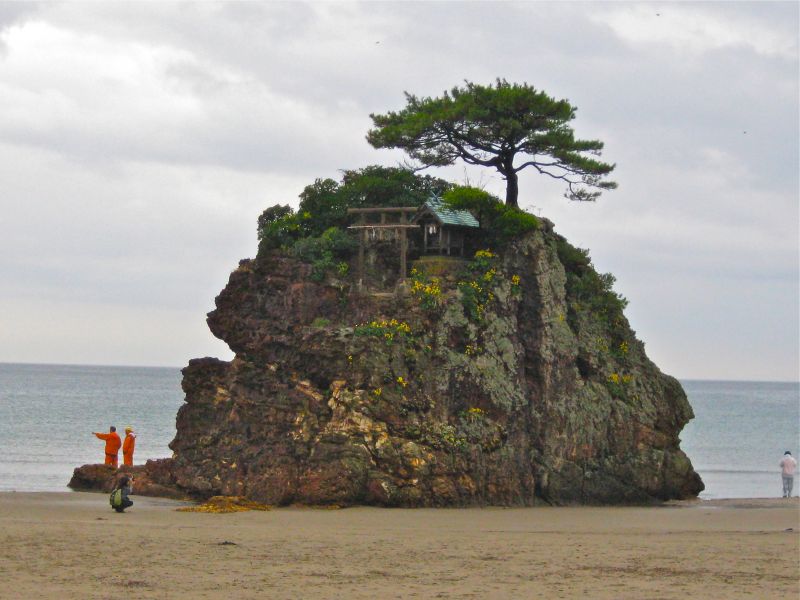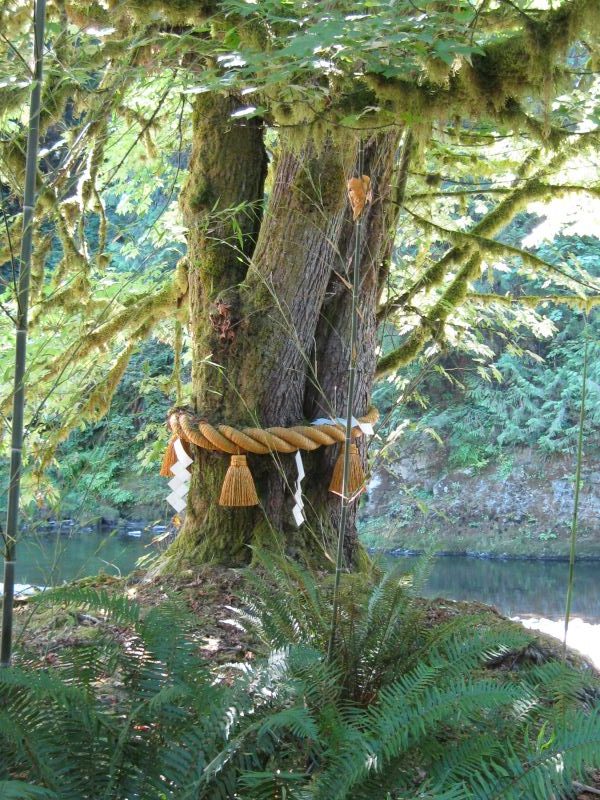
Kami worship in a woodland clearing is believed to have been the origins of today’s Munakata Taisha
Travel around modern Japan, and the shaping of the country’s spirituality is still very much evident in the villages that nestle in the valley basins. Fertile land is at a premium, so houses tend to be packed together. A system of channels and conduits steer the clear flowing water down through the rice fields. Graves are set apart from the houses, edging up the lower slopes of the hillsides. Above them hovers a dark and unseen world, hidden by a canopy of trees.

Model depicting the rice-growing communities of Yayoi times
Around the settlements, on the lower slopes of the hillsides, lay an area for the dead. Ancestral spirits thus became an intermediary between human settlements and the wooded hilltops in which loomed monsters, tengu and terrifying animals. In this way the Japanese mind became imbued with a legion of otherworldly spirits, a legacy that still evident in the popular culture of today’s secular society.
Over 70% of the archipelago is covered in mountains, and even today a remarkable 67% of the country comprises woodland. The beauty of the natural features inspired a sense of divinity, together with an acute awareness of its volatility for Japan is a land of earthquakes, typhoons and tsunami. On top of that, about one-third of its 188 volcanoes remain active and likely to erupt at any time. In the face of such destructive forces, placating the spirits that govern them became a matter of vital importance.
The mountain peaks which spoke of other worlds gave rise to the notion of a sacred realm off-limits to ordinary humans. Certain sites such as Mt Fuji which resonated with a numinous presence became the objects of local lore and places of ritual. Waterfalls for instance embody the universal energy which emanates from them. Particular rocks and trees, especially those with striking features, were singled out as vessels into which spirits descend, symbolic entities which represent the life-force. Shinto in this sense can be said to be more kami worship than nature worship. It’s not the sun that’s worshipped. It’s the spirit in the sun.
***************
The above is an extract from a work in progress, tentatively titled Within the Mirror.
***************



Very much looking forward to reading this, John!
Thank you for the encouragement…